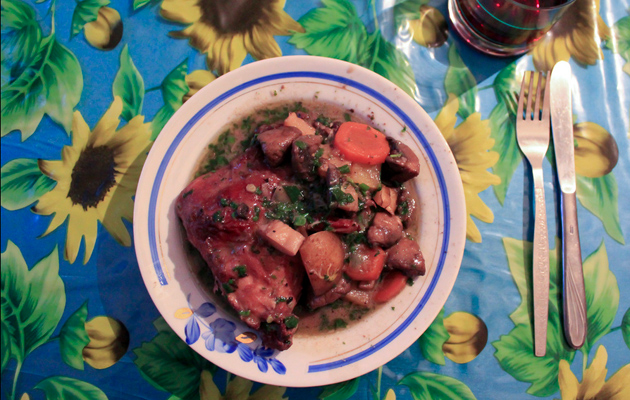Fancy an alternative to jugged hare?

Hare is a fantastic meat
Looking for a different hare recipe?
We eat few hares in the UK. Indeed, around 90 per cent of those harvested here go abroad. This is mainly due to the fact that when it comes to cooking hare we seem to be stuck in a time warp. Not many chefs look beyond the jugged hare recipes of old, a dish that to many of today’s tastes is strong and unappealing. Hare is a fantastic meat if you cook it well and with care.
What you need to know about cooking hare
There are a couple of things to remember about hare. First, its meat is strong in terms of flavour and smell, which can put people off. Secondly, it is a mammal and as such has parts that are tender and will cook quickly (the first-class cuts such as the loins) and parts that are tougher and will therefore take longer to cook (second-class cuts such as the shoulders and legs).
I gut and skin my hares as soon as I can then wash the whole animal in cold water two or three times. This will tone down the strong odour and taste without detracting from its fantastic natural flavour. Cut the hare into two shoulders, two legs, one saddle and one rib end. Remove the silvery sinew from the saddle but leave the loins on the bone.
The legs and shoulders are for stewing and braising dishes, the loin is for roasting and the rib end is for making sauces.
Flavoursome
Brown hare meat is extraordinary. It has a huge amount of flavour and is very similar to our native blue or mountain hare.
Here’s a way of cooking brown hares. Remove the haunches along with the shoulders and cook them slowly with butter, red wine, star anise, white pepper and lots of garlic.
Once the meat is falling from the bones, carefully remove the bones, drain the meat of fluid, separate the butter from the remaining liquid then take it from there.
The butter you have taken off can be chilled and used to make a rich pastry, which can, in turn, be used to make pastries stuffed with the slow-cooked hare meat.
Some of the meat can be pressed into a terrine and chilled, then later sliced and fried, and served with greens and the reduced stock from the original cooking process as a rich sauce.
The loins of hare are precious indeed and must be cooked carefully — they should be just pink and served with the most simple of garnishes. This is the best rare meat you will ever eat.

Norfolk stewed hare recipe
Hares have a much stronger flavour than rabbit and often need to be slow cooked to get the best of the meat.
This recipe for stewed hare from Heydon Hall is absolutely foolproof and easy to follow.
Ingredients
- 50g / 2oz butter
- 175g / 6oz streaky bacon, diced
- 2 medium onions, chopped
- 50g / 2oz flour
- 1 hare, jointed
- 11/2lt / 21/2pt stock
- 275ml / 1/2pt red wine
- 1 clove of garlic, crushed
- 225g / 1/2lb button onions, glazed
- Salt and pepper
- 110g / 1/4lb mushrooms, quartered
- 8 croutons of fried bread for serving
Method:
- Fry the bacon in butter until it starts to colour. Remove, add the onions and sauté until transparent.
- Remove, sprinkle in the flour until the colour is nut brown. Add the hare and risotte well – this takes seven to 10 minutes.
- Remove and place on a separate plate. Add the stock and wine, stirring rapidly. Bring to the boil.
- Add the garlic, onions, seasoning, bacon and hare. Put a piece of paper under the lid and cook at 170°C/325°F/gas mark 3 for 1.5hrs.
- Remove the bacon and hare pieces, and place into the casserole. Strain the sauce over the meat and add the mushrooms – you can add the blood of the hare at this stage if desired.
- Add a few glazed onions and simmer together for 20 minutes. Garnish with croutons.



